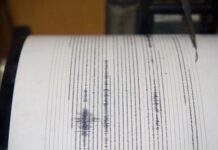Measure J, an obscure, longtime property tax, will end in 2012
unless refinanced and approved again by voters
Gilroy – Measure J may be in the market for Botox soon.
Sure, 30 isn’t exactly a wrinkle-ridden age, but it’s likely the property tax has developed a complex having spent the past four years living under the shadow of Measure I, the $69-million bond most often referred to when discussing district funds and future projects.
But not only is Measure I younger – it’s also much easier to understand than the obscure Measure J.
In 2002, the district sold Measure I to voters as a package deal: approve the extra tax and Gilroy will have two new elementary schools, the first phase of a new high school, a new student center at Gilroy High School and various sites will be modernized.
Locals were told that they would pay an estimated $57 for every $100,000 of assessed property. The bond was approved by voters, the district borrowed the money and the property tax pays off the loan, plus interest.
Measure J, which has been around in some form since 1976, is a different animal. While the tax rate for Measure I fluctuates because the district can’t guess property variants and it’s adjusted to pay off the interest, Measure J is a flat tax, said GUSD Assistant Superintendent Steve Brinkman. The tax rate for Measure J on property tax bills always reads: 0.07050 per $100,000 of assessed value.
That stagnant tax and Gilroy’s housing boom, has resulted in a hefty $42.8 million in district funds.
Originally passed in 1976, the district renewed the tax in 1992, after it was approved by voters. In 1994, the district refinanced the tax and created $11.7 million.
In 2001, the district refinanced the tax again and raised $14 million in funds. And the funds from the district’s 2004 deal brought in $7.6 million. Voters must approve the tax every time it’s renewed.
In 2007, the district expects to collect an additional $3 million in Measure J taxes, Brinkman said.
Unless the district decides to refinance and voters approve the move one again, Measure J will sunset in 2012.
For Gilroy residents, who own a $720,000 home – the median price in 2005 according to the Santa Clara County Association of Realtors – at least $507 of their annual property taxes are dropped into the Measure J bucket and an estimated $490 toward Measure I.
The Measure J bond may not be the current hot topic in Gilroy, but Mark Zappa is quite aware of its existence.
“The thing I don’t like about it is they keep stacking these school bonds one on top of the other and then at the end of the day they don’t have the funds (to complete the projects),” he said. “When is it enough? And that’s always been my point with Measure J.”
Zappa fought GUSD’s failed measure, the predecessor to Measure I. And when the district introduced Measure I he again pointed out that they were still collecting funds from Measure J.
“There are layers and layers and layers of taxes that people pay that a lot of them don’t even know about,” he said.
Government entities sell the bond with a specific timeline and they always come back before it sunsets and ask voters to renew the tax, assuming property owners won’t protest because they’re used to paying it, Zappa said.
“The apartment dwellers don’t pay that and are the beneficiaries,” Zappa said. “Bonds target property owners, in other words ‘rich.’ Why should the homeowners only have to foot the bill for these bonds? That is something that has always bothered me.”
But Dale Morejon, a Gilroy homeowner and California Teacher’s Association chapter services consultant, said he has no problem paying extra taxes to fund construction for local public schools. Also, Measure J is still in existence solely because locals have repeatedly cast their vote in its favor, he said.
“Every situation is different but I think what it boils down to is it’s an investment in the future because public education is not going away,” Morejon said.
If the state doesn’t fund infrastructure but the enrollment at local schools is growing, then it’s necessary to pass a bond, he said.
As long as the district is accountable for all public funds, Morejon said he has “no qualms about investing in public schools.”
One of the major reasons Measure I passed was because the district made it clear that they would be entirely accountable, he said.
Measure I has had its fair share of press lately ever since district officials first announced in April that they were facing an $18 million gap in funds. In January, Brinkman announced that he’d managed to whittle the shortfall to $6.9 million and that few of the proposed projects would fall by the wayside.
District officials attributed the increased price tag to rising material and construction costs. The district plans to offset the Measure I gap with Measure J funds and the sale of donated land.
Mt. Madonna High School modernizations, Brownell Middle School’s new multipurpose room and various upgrades and/or modernizations projects at different sites were canceled.
But many projects are already finished courtesy of Measure I, including the new Eliot Elementary School, multipurpose rooms at El Roble and Glen View elementary schools, South Valley Middle School upgrades and safety upgrades at various school sites.
The GHS student center is scheduled for completion in April and a new elementary and high school are on the roster.
Measure I
– Approved by voters: in 2002
– Bond: $69 million
– Average Tax: $57 per $100,000 assessed property
– Projects: Christopher High School phase one construction; new elementary school; GHS student center and other modernizations.
– Completed projects: multipurpose rooms at El Roble and Glen View elementary schools, Eliot Elementary School, modernizations at various sites.
History of Measure I
– Total Measure J funds: $42.8 million
– First approved: 1976
– Tax rate: 0.07050 percent
– Estimate of first collection: $9.5 million
– Approved for renewal: in 1992
– 1994: Refinanced 1976 deal to create additional $11.7 million
– 2001: Refinanced 1994 deal to create $14 million
– 2004: Refinanced at lower interest rate to
create $7.6 million
– 2007: Expect to collect $3 million or more
– Ends: 2012
– Projects: Luigi Aprea Elementary; upgrades at Brownell, South Valley middle and Glen View, Eliot, Rucker elementary schools.











